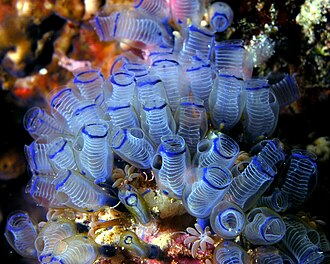The dual theme of my A to Z Challenge this year is the world of Commodities and Poetry Forms so the juxtaposition of these two themes may throw up some strange poems – could be a Heroic Ode to Heating Oil or will it merit a Haiku or a Haibun – whichever, I will be endeavouring to bring you interesting facts about commodities that may change the way you think about the stuff we variously depend on…
By commodity I mean certain items that are of both sufficient value/volume to be traded in special markets and are generally volatile enough to attract traders in “Futures” which are a way of hedging bets in the trading world of stocks, shares and commodities.
The A to Z Challenge runs throughout April and will consist of 26 posts – there are only a couple of letters for which I couldn’t find commodities but plenty of poetry forms to carry the day!
Worldwide trade in Vanadium 2022 was $38970 million and growing…
When starting to research each of the commodities in this A-Z Challenge, I have only had some preconceived idea of the stories or interesting facts about a few of the items – for the most part – a trip to Wikipedia is good starting point or seeking the answer to the above question on World Trading – but with Vanadium, I have been faced with a wall of chemistry. yes there is a discovery timeline – of course there is – and there is a naming story involving an ancient goddess but more than any other element, my overwhelming first impression is that we are going to have to talk some chemistry…
The first discovery in the Vanadium story was in Mexico, in 1801 Andrés Manuel del Río extracted the element from a sample of Mexican “brown lead” ore, later named vanadinite. So like the “bad copper ore” in Nickel and the ouro podre, ‘worthless gold,’ we encountered in Palladium, the Vanadium story starts off being an impurity or mistaken identity in the mining of some other substance. Because the salts of Vanadium displayed so many different colours, del Rio initially named the substance panchromium (Greek: παγχρώμιο “all colours” but later renamed it erythronium (Greek: ερυθρός “red”) because most of the salts turned red upon heating. Swedish chemist Nils Gabriel Sefström rediscovered the element in a new oxide he found while working with iron ores. Later that year, Friedrich Wöhler confirmed that this element was identical to that found by del Río and he called the element vanadium after Old Norse Vanadís (another name for the Norse Vanir goddess Freyja, whose attributes include beauty and fertility and from whom we get Friday and less salubriously – frigging!).

Below is a science experiment demonstrating the reason for the many colours of different chemical states of Vanadium plus if this guy does not look like the original mad scientist I don’t know who would…
Of all the hard commodity metals we have encountered, Vanadium, though rarely occurring as a native metal, has one of the most varied occurrences being present in about 65 different minerals and so it has many and varied methods of extraction. More chemistry required. As well as ores such as patrónite and Vanadinite, Uranium ores such as carnotite, vanadium can be found in bauxite and deposits of crude oil, coal, oil shale, and tar sands, in sea water and in volcanic mineral springs. You can read more about the technical aspects of Vanadium here.
When such oil products are burned, traces of vanadium may cause corrosion in engines and boilers.[62] An estimated 110,000 tons of vanadium per year are released into the atmosphere by burning fossil fuels
Wikipedia
Once again, we find a metal which has become vital as an alloy ingredient – about 85% of it is used in ferrovanadium or as a steel additive where it significantly increases the strength of the steel making it suitable for many tools as well as specialist engineering applications like the turbine blades in jet engines (mixed with Aluminium and Titanium) and closer to home, if you can afford dental implants – you may have some in your mouth. Vanadium is used as a catalyst in the production of Sulphuric Acid and thence in many industrial chemical processes whilst the vanadium redox battery is a vital part of grid energy storage and may be important in the development of future battery technologies.
With the cosmic abundance of vanadium being around 0.0001%, it is hardly surprising that this chemical of complex possibilities has found its role in living creatures – more in marine environments than on land – but even on land vanadium occurs in some fungi including the iconic Fly Agaric.

The jury is out as to the utility or otherwise, of Vanadium in the human body – deficiency in rats has been linked to poor growth and some inconclusive experiments suggest it might help with type 2 diabetes, but neither minimum recommended doses of Vanadium as a supplement nor its threshold as a poison have been properly established. Another reflection of the complex chemistry of Vanadium…
As a trading commodity, Vanadium may be less than $Billion which is small compared to some of the commodities we have looked at, but it is a very vital ingredient in the modern world and a little of it goes a long way. But as the quote below shows – looked at in geopolitical terms – two of the top producer countries are problematic to Western interests – especially in the light of sanctions against Putin’s Russia and America’s problems squaring up to China, so these potential instabilities stoke the kind of opportunities that markets like to speculate on…
Vanadium is mined mostly in China, South Africa and eastern Russia. In 2022 these three countries mined more than 96% of the 100,000 tons of produced vanadium, with China providing 70%
Wikipedia
And so to today’s poem which as we are at “V” – is a Verbless Poem.
The poets.org, has this to say about Verbless Poetry in turn a quote from the definition by Edward Hirsch in his A Poet’s Glossary:-
Poems without verbs. On one hand, the verbless poem can create a static quality, a sense of the arrested moment, which is why it has appealed to poets who write haiku and other types of imagist poems. […] On the other hand, the verbless construction can give, as the linguist Otto Jespersen points out in “The Role of the Verb (1911),” “a very definite impression of motion.” That’s why verbless constructions especially appealed to the futurists, such as F. T. Marinetti (1876–1944), who eliminated verbs in order to create a sense of telegraphic communication in a furiously changing world.
– Seems an appropriate form for Vanadium…
Vanadium – a Verbless Poem
From a multitude of sources
through a cascade of chemical processes
to a plethora of purposes
vital to our modern world
Vanadium our alloy ally…
© Andrew Wilson, 2024

What a detailed post. Couldn’t read it all – way over my head but I thought the poem was very good.
No – even for me, the chemistry was too much so I had to draw the line about what to include – glad you liked the poem…
Fascinating video of vanadium.
The mad scientist’s hair is amazing and so is the chemistry…